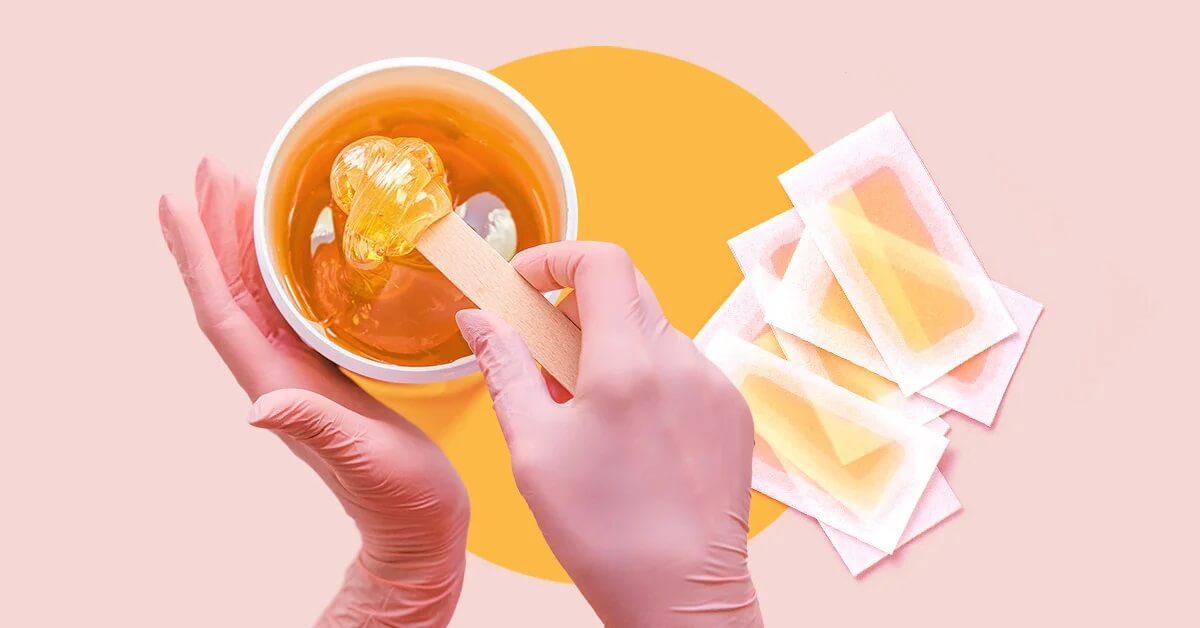For anyone looking to breathe new life into their hair removal routine (and self-care regimen), sugaring or waxing might come up on your search for worthy contenders. While they may sound like completely different hair removal techniques, you might be surprised to learn that they’re fundamentally the same — they both pull hair out from the root. The key differences between them lie in the ingredients, technique, and pain levels.
Ingredients
One of the primary differences between sugaring and waxing lies in the ingredients. Whereas sugaring uses some common household and pantry staples — sugar, lemon juice, and water — cosmetic waxes typically use resins that are often chemical-based.
It may be worth noting here that the ingredients used for both processes also have implications for cleanup. Whereas the sugaring paste can easily be wiped away with warm water, wax needs a little more elbow grease. To remove any wax left behind on your parts, you can choose one of three methods:
- Ice the area to harden the wax enough for scraping.
- Use mineral oil to grease it off.
- Wipe it away using a cotton pad dipped in 70% isopropyl alcohol.
Application and technique
While sugaring and waxing are two different types of epilation (they pull hair out from the hair root), they also differ in their application and techniques for hair removal.
| Sugaring | Waxing |
|---|---|
| Lukewarm sugaring pastes are applied against hair growth | Hot wax is applied with an applicator stick to whatever area you’re treating |
| Pastes are pulled or flicked off (usually with strips of cotton) in the same direction of hair growth | Cloth strip is applied firmly on top of wax and pulled or flicked off quickly against the direction of growth |
| Adheres to the hair only | Adheres to the skin |
Sugaring vs. waxing
Pulling the hair against the direction of your growth (waxing) often leads to more breakage versus a clean pluck from the root. You might need an additional pass or two to get the stubborn hairs out when that happens.
The problem, however, is that wax adheres to the skin during this process, so repeated passes can lead to irritation, bruising, bleeding, and ingrown hairs. Sugar paste, on the other hand, only adheres to your hair, so it’s typically less irritating and damaging to your skin no matter how many passes you need to take.
Pain and sensitivity
These processes both pull hair out from the root, so they’re both likely to elicit some pain. That said, sugaring may edge out waxing by a hair (see what we did there?) because it’s also hypoallergenic. The fairly innocuous mixture of sugar water and lemon is a good option for sensitive skin. Moreover, these ingredients also happen to be great skin exfoliators, so, like with shaving, your skin will likely feel super smooth after sugaring.
The sugar paste acts more on the hairs themselves, not the skin — the same can’t be said for waxing. So when you’re pulling with sugar, you’re getting the hairs themselves, not live skin. Ultimately, that means that while sugaring is gentler on your skin than wax, it can be more painful
One final thing to remember is that sugar paste can be used on any part of your body. Due to the delicate nature of some body parts, you may want to think twice about where you use cosmetic waxes.
Results and regrowth
Both methods pull hair out from the root, so you can expect hair to grow back in two to eight weeks. Keep in mind, once again, that sugar pastes adhere to the hairs themselves, which means that while sugaring is significantly more painful than waxing it may be a more effective hair removal method. This is particularly true if you (or your aesthetician) are working with shorter hair — sugar paste can grab onto those short hairs in a way that wax can’t.
Beauty is pain
Sugaring and waxing work in much the same way by pulling hair out from the root. The differences between them lie in their core ingredients, the pulling technique, and their overall effect on your skin. Unlike waxing, sugar pastes act on the hair itself and not the skin, which can prevent some irritation. If you’re trying to decide which hair removal method is best, don’t forget to take skin sensitivity, pain thresholds, and cost into consideration. The cost of sugaring and waxing varies based on your location, the salon you choose, and a host of other factors, a good rule of thumb is that sugaring usually costs about $5 to $10 more than waxing.





